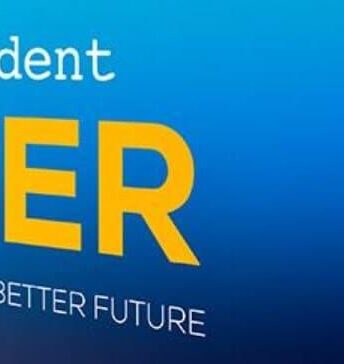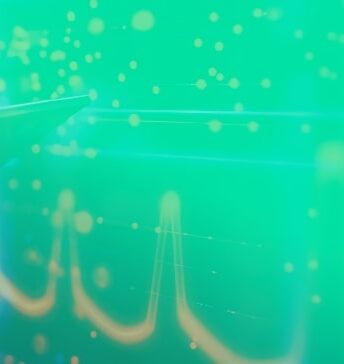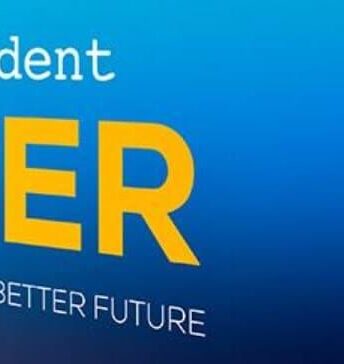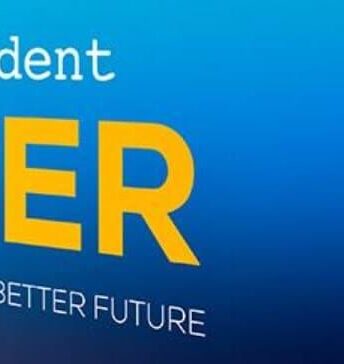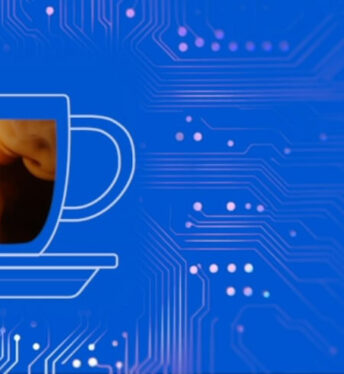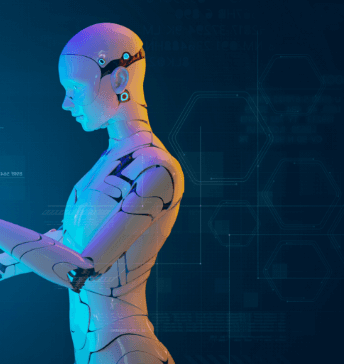In the era of Industry 4.0, digital transformation is not just a buzzword; it is a necessity for businesses across the manufacturing sector. As the fourth industrial revolution unfolds, Artificial Intelligence (AI) and Machine Learning (ML) are paving the way for unprecedented efficiency and productivity. One of the most transformative aspects of AI in this sector is the application of computer vision. A leader in this field is Stefanini, a pioneering entity that has revolutionized the way manufacturing companies leverage computer vision to drive operational efficiency.
The Power of Computer Vision in Manufacturing
Computer vision is a subfield of AI that enables computers to interpret and understand visual data. In manufacturing, computer vision technology is pivotal in quality control, predictive maintenance, safety enhancement, and process automation. It detects defects, monitors equipment and guides equipment, robots, and more.
Stefanini has been at the forefront of this revolution, using both traditional image processing techniques and AI/ML methodologies to provide comprehensive computer vision solutions to its clients. With a significant 40% of its portfolio dedicated to the manufacturing industry, the maturity of its practice is evident.
Traditional Image Processing Techniques
Traditional image processing techniques form the backbone of Stefanini’s computer vision solutions, offering a deterministic, explainable and reliable approach especially beneficial in safety-critical sectors like manufacturing. Unlike AI/ML techniques, these traditional methods. The deterministic nature of these techniques reduces the risk of unexpected outcomes and offers a level of explainability often absent in AI/ML methodologies. This transparency is essential in manufacturing, facilitating easier troubleshooting, allowing for fine-tuning, and meeting regulatory requirements for traceability and accountability in automated systems.
Image Preprocessing
In the initial stages, images captured by the system are subjected to a series of preprocessing operations to enhance their quality and ensure they’re free from irrelevant or misleading information.
- Filtering: Noise in images is a common issue that can disrupt the performance of computer vision algorithms. Stefanini uses various filtering methods, such as Gaussian blur, median filtering, and bilateral filtering, to mitigate noise and smoothen images.
- Contrast Enhancement: The company uses methods like histogram equalization and adaptive histogram equalization (CLAHE) to improve the contrast of images. This makes the images clearer and easier to analyze.
- Image Segmentation: To separate the regions of interest from the background, techniques such as thresholding, edge detection, and watershed segmentation are applied. This enables the system to focus on pertinent details and ignore irrelevant information.
Figure 1 – Data Augmentation
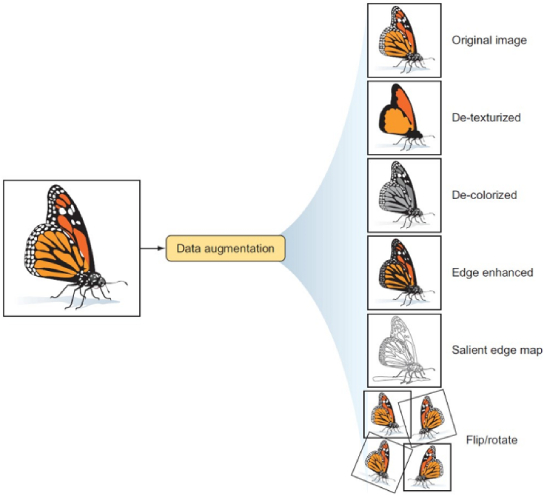
Object Detection
Following preprocessing, images undergo object detection, a process that identifies specific objects within the image. This is a crucial aspect of many computer vision applications, including quality control and automated inspection in manufacturing.
- Edge Detection: Edges in an image signify boundaries or transitions between different objects or regions. Edge detection algorithms like the Sobel, Prewitt, and Canny operators are used to identify these edges, thereby delineating objects within the image.
- Contour Detection: After edge detection, contour detection is used to identify the outline of objects. OpenCV provides methods like findContours and drawContours to extract and depict these contours.
- Shape Detection: Stefanini uses shape detection to further recognize and classify objects. Techniques such as Hough Transforms are used for detecting geometric shapes like lines, circles, and rectangles.
- Feature Detection and Description: To identify and describe local features in an image, the company uses algorithms like SIFT (Scale-Invariant Feature Transform), SURF (Speeded-Up Robust Features), and ORB (Oriented FAST and Rotated BRIEF). These features can be used to match similar objects across different images.
Through this multi-layered approach to image processing, Stefanini ensures that images are optimally prepared for further analysis. The company’s ability to integrate these traditional techniques with cutting-edge AI/ML methodologies positions it at the forefront of computer vision applications in the manufacturing industry.
AI/ML Techniques
Stefanini goes beyond the foundations of traditional image processing techniques by integrating advanced AI/ML methodologies to provide a deeper layer of analysis. The company specializes in object recognition, employing state-of-the-art libraries and techniques, and employs the power of transfer learning to fine-tune models specific to their client’s needs.
Object Recognition Techniques
In the realm of object recognition, Stefanini utilizes a combination of cutting-edge ML libraries and techniques. Libraries such as TensorFlow and PyTorch are leveraged to develop and optimize sophisticated models capable of identifying and classifying objects within images.
The company often employs Convolutional Neural Networks (CNNs), a class of deep neural networks most applied to analyzing visual imagery. CNNs consist of multiple layers of neurons that can process pieces of the image, like edges or corners, and gradually combine information from these pieces to recognize larger structures and, eventually, entire objects.
Object detection models like YOLO (You Only Look Once), SSD (Single Shot MultiBox Detector), and Faster R-CNN are also used to not only recognize but locate objects within an image. These models are particularly valuable in the manufacturing sector, where precise localization of defects or parts is often required.
Specializing in Transfer Learning
Transfer learning, a key aspect of Stefanini’s AI/ML approach, stands as a major differentiator. The principle behind transfer learning is leveraging the knowledge gained while solving one problem to solve a different but related problem. In the context of Stefanini’s work, this involves utilizing pre-trained models from large datasets like COCO (Common Objects in Context) and ImageNet and then fine-tuning them with specialized datasets from their customers.
These large datasets contain millions of images that have been annotated to train models to recognize a wide range of objects. By starting with these pre-trained models, Stefanini can save significant time and computational resources. The models have already learned to identify many common features and can be fine-tuned with a smaller amount of customer-specific data to perform well in specific scenarios.
This approach brings several benefits. For one, it allows the company to develop models that are finely tuned to the unique requirements of each customer, ensuring optimal performance in the real world. Furthermore, it reduces the amount of data needed from the client, a critical advantage when dealing with sensitive or proprietary images.
The blend of advanced AI/ML techniques, combined with transfer learning, allows Stefanini to deliver superior object recognition solutions. This advanced approach, built on top of the robustness of traditional image processing, firmly places Stefanini at the forefront of computer vision applications in the manufacturing industry.
An End-to-End Service
Stefanini’s value proposition extends beyond developing and applying computer vision technologies. It provides an end-to-end service, starting with business analysis, data set construction, and annotation based on real-world customer scenarios. This approach is critical as the quality and relevance of the data are used for training directly.
After the data is prepared, Stefanini trains models, tests them, and then deploys them into the customer’s operations. But the company’s involvement doesn’t end there. It continues to maintain and enhance the models over time, ensuring they continue to perform optimally as the customer’s requirements evolve.
This holistic service has made Stefanini a go-to partner for a range of businesses, from small enterprises to international corporations. The company’s offering is not only technologically advanced but also affordable, making the benefits of computer vision accessible to a broad range of businesses.
Unveiling Stefanini “Vision Lab”
In its ongoing commitment to driving efficiency and democratizing access to cutting-edge computer vision technology, Stefanini has developed a new platform, “Vision Lab”. This platform is designed to expedite the delivery of computer vision solutions and is equipped with an array of tools to assist the company’s computer vision team and, potentially in the future, thousands of other businesses.
Seamless Image and Video Manipulation
The Vision Lab platform offers a suite of tools for image and video manipulation, enabling the team to efficiently perform operations such as resizing, cropping, rotating, and color adjustments. These tools not only help enhance the quality of the images but also ensure they are in the ideal format for further processing and analysis.
Enhanced and Automated Annotation
One of the most challenging aspects of developing computer vision models is the process of data annotation. Vision Lab addresses this challenge head-on with its advanced annotation tools. These tools not only facilitate manual annotation but also offer automated annotation capabilities, significantly reducing the time and effort required to prepare data for model training.
Streamlined Model Training and Deployment
Vision Lab revolutionizes the model development process with its automated model training and deployment features. It eliminates the need for manual intervention in these stages, saving time and reducing the potential for error. Once a model is trained and validated, it can be automatically deployed to a production environment, ensuring a seamless transition from development to operation.
Quick Inference and Scalability
The platform also boasts rapid inference capabilities, enabling models to analyze new data and produce results with exceptional speed. This is crucial in manufacturing settings, where timely decision-making can significantly impact productivity and efficiency.
Moreover, Vision Lab comes with automated infrastructure scalability. As the demand for computer vision services grows, the platform can scale up its resources to handle the increased load. This ensures the performance remains stable even under high demand, providing reliable service to all users.
Outlook
While currently serving as an internal tool to accelerate and enhance Stefanini’s service delivery, the potential of VL extends far beyond. The company is considering releasing this platform to the public in the future, empowering businesses with great ideas for computer vision applications but lacking the resources for a full-scale engagement.
By providing these businesses with the tools and automation capabilities of VL, Stefanini could democratize access to advanced computer vision technology, enabling a new wave of innovation and efficiency across a multitude of sectors.
Conclusion: The Strategic Advantage of Choosing Stefanini
The successful integration of traditional image processing techniques and advanced AI/ML methodologies, combined with the innovative Vision Lab platform, truly sets Stefanini apart in the realm of computer vision applications. This strategic blend allows the company to deliver robust, reliable, and highly customized solutions in a timely and efficient manner.
Stefanini understands the unique challenges and requirements of the manufacturing industry. Leveraging deterministic and explainable traditional techniques provides an essential level of reliability and predictability, while AI/ML techniques bring a deeper layer of analysis and adaptability. This approach ensures that the solutions provided are not only effective but also transparent and trustworthy.
Moreover, the development of the Vision Lab platform demonstrates Stefanini’s commitment to continuous innovation and efficiency. By automating and streamlining key processes, Vision Lab enables rapid delivery of results, ensuring that clients’ needs are met promptly without compromising on quality.
The potential public release of the Vision Lab platform is a testament to Stefanini’s vision of democratizing access to advanced computer vision technology. This move could empower countless businesses, fostering innovation and improving efficiency across various sectors.
Choosing Stefanini is choosing a partner that values reliability, innovation, and the democratization of technology. It is a choice for a partner that combines deep industry knowledge, technical expertise, and a forward-thinking approach to deliver solutions that truly address the needs of its clients, driving improvements in productivity, efficiency, and safety. It is a choice for a future where computer vision technology is accessible, understandable, and beneficial for all.
About Gabriel Martins
Gabriel is a computer engineer with over 10 years of full-stack software development and 8 years developing AI/Data Analysis systems to bring power to many clients. Gabe’s experience includes development and delivery of entire software projects at every stage of development: pre-sales, requirement analysis, time/cost estimation, infrastructure architecture, application architecture, containerization, dev-ops setup, UX research, UI development, data management & analysis, AI/ML modelling and development, network security, cryptography, software publishing, software distribution, cloud infrastructure deployment (Azure), etc.


